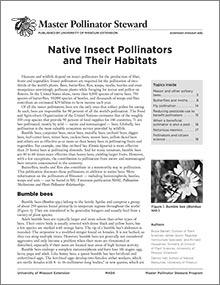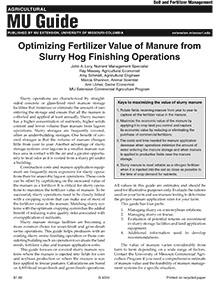

Optimizing Fertilizer Value of Manure from Slurry Hog Finishing Operations
Reviewed
See recommendations for applying manure on corn, soybeans or fescue. Learn how to maximize slurry manure’s value and assess its storage and application cost.
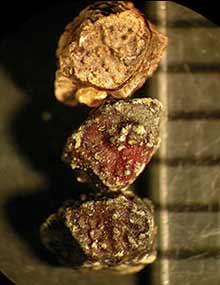
Missouri Weed Seeds, Page 23
Reviewed
Most of the plants from Euphorbiaceae (Spurge family) present in Missouri are spurges, which include about 20 different species.
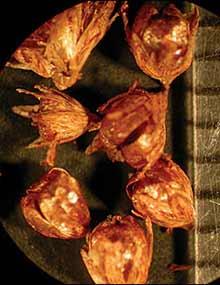
Missouri Weed Seeds, Page 26
Reviewed
More than 20 species of Juncaceae (Rush family) occur in Missouri. Rushes are not true grasses or sedges. Determining individual species of rushes by plant characteristics is nearly impossible.
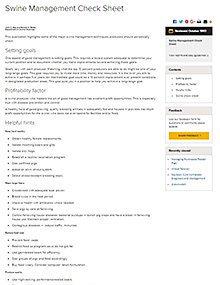
Swine Management Check Sheet
Reviewed
This publication provides a comprehensive checklist for swine producers, covering essential management practices from breeding to farrowing.

Missouri Weed Seeds, Page 29
Reviewed
Several species of Malvaceae (Mallow family) are among the most common broadleaf weeds in Missouri. These include velvetleaf and prickly sida. Cotton is also a member of this family.
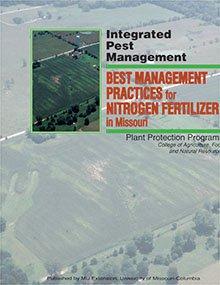
Best Management Practices for Nitrogen Fertilizer in Missouri
Reviewed
Learn how to manage nitrogen fertilizer in crops to boost yields, reduce losses, and enhance environmental outcomes through best practices.
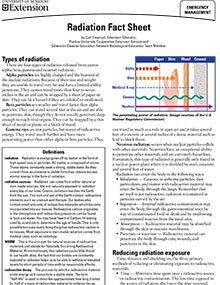
Radiation Fact Sheet
Reviewed
Explains types of radiation—alpha, beta, gamma, neutron—their sources, health effects, and ways to reduce exposure.

Coping With Summer Heat
Reviewed
The heat of a Missouri summer not only can make for high utility bills, but also can be deadly. Here are some tips to help keep you comfortable, healthy and penny-wise.
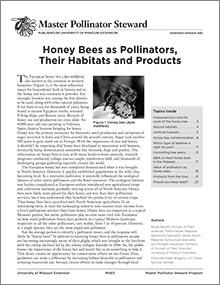
Honey Bees as Pollinators, Their Habitats and Products
New
Learn about the honey bee, from its life cycle, to its various races, to its pest problems, the benefits it provides, and how we can aid its success in this University of Missouri Extension guide. Become a Master Pollinator Steward!

Squeezed by Rising Food Prices?
Reviewed
Small changes in your shopping habits can mean saving money at the grocery store. Check for tips on this page that can work for you and your family.

Conserving Missouri's Wild and Managed Pollinators
New
Pollinators are critically important for natural ecosystems and crop production. Learn why pollinators are crucial, the major threats confronting them, conservation steps being taken, and how you can help in this University of Missouri Extension guide.

Challenges and Choices: Fit for Life
Reviewed
Practical tips to boost energy and health by adding fruits and vegetables to meals, snacks, and busy lifestyles.

Preserve It Fresh, Preserve It Safe: 2018, No. 4 (July/August)
New
Discover the Seasonal and Simple app, your guide to selecting, preparing, and enjoying fresh, in-season produce with ease.
Collective Bargaining 2: Behavioral Factors Influencing Union Bargaining Power - Page 3
New
Organizational behavior Organizational behavior
When individuals are brought together in any social setting, they may collectively evolve into one of several forms of social organization.
Collective Bargaining 2: Behavioral Factors Influencing Union Bargaining Power - Page 6
New
Building an effective bargaining committee Building an effective bargaining committee
The primary factors for the determination of who will serve on the bargaining committee are the constitution and by-laws of the orga

Collective Bargaining 2: Behavioral Factors Influencing Union Bargaining Power
New
Explore behavioral factors that influence union bargaining power, including solidarity, organizational dynamics, and member engagement strategies.
Collective Bargaining 2: Behavioral Factors Influencing Union Bargaining Power - Page 4
New
Strategic and tactical planning Strategic and tactical planning
One method for taking advantage of both the common and diverse interests of the membership of a local union is to approach bargaining as one aspect of a broader process of stra
Collective Bargaining 2: Behavioral Factors Influencing Union Bargaining Power - Page 2
New
Not all local unions approach the collective bargaining process from the same scope of institutional power, nor should they. Collective bargaining is not a ‘one size fits all’ undertaking. In some cases, a local may be responsible for all aspects of the bargaining process with the international union filling only an advisory, consultative or oversight function.
Collective Bargaining 2: Behavioral Factors Influencing Union Bargaining Power - Page 5
New
Membership support of and involvement in the bargaining process Membership support of and involvement in the bargaining process
Economic security and workplace representation are important goals of the union in the bargaining process.
Tree Pests: Emerald Ash Borer - Page 2
New
EAB signs and symptoms Identify tree as an ash
To begin, make sure your tree is an ash tree. To identify an ash tree, first look for the following:
Tree Pests: Emerald Ash Borer - Page 6
New
EAB management for homeowners
If you have ash trees, learn more about EAB before you act. The potential threat of EAB is real, but acting without understanding the specific threat to your trees, regulations, quarantines and your options could cause the unnecessary loss of treasured shade trees.
Tree Pests: Emerald Ash Borer - Page 9
New
Learn how to manage the Emerald Ash Borer, a damaging pest to ash trees, including control methods and movement restrictions to prevent spread.
Tree Pests: Emerald Ash Borer - Page 3
New
Where EAB has been found
EAB has spread significantly since its original detection in the Detroit area back in 2002, and as one can see from this map, there are still a lot of vulnerable locations across the United States.
Tree Pests: Emerald Ash Borer - Page 4
New
Track EAB activity for 2020
Statewide for 2020, EAB activity is now declining. However, symptoms such as bark flecking and epicormic sprouting will continue to show up on infested trees.
